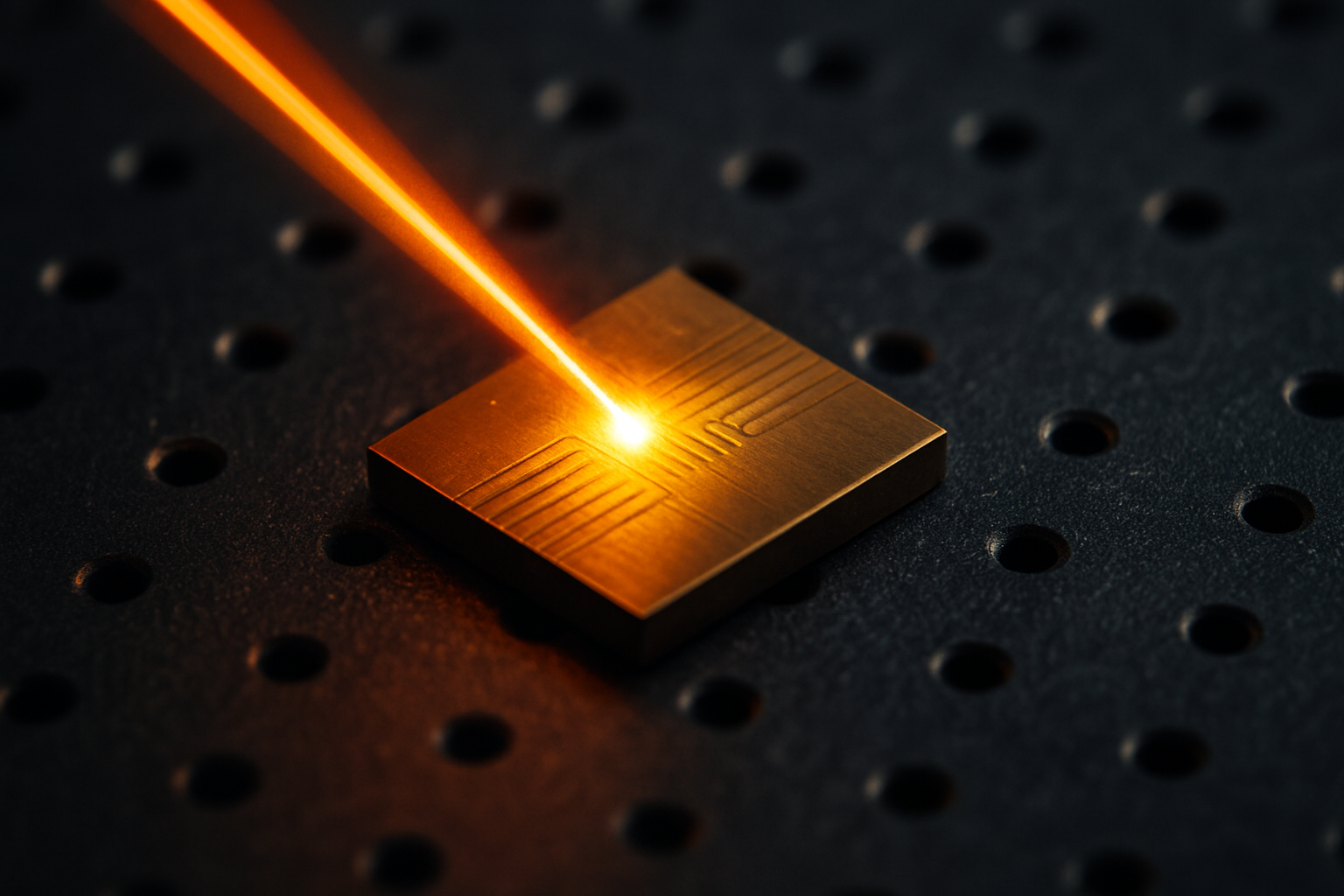In an era where computing speed defines global power, a new contender has emerged the laser accelerator chip. This compact, game changing innovation may quietly determine who dominates the next generation of advanced technologies.
Unlike massive underground particle accelerators, this new tech shrinks raw atomic power onto something no bigger than your fingernail. And behind its sleek glass casing is a brewing silent war between two of the world’s biggest superpowers, the United States and China.
The Race Heats Up: Technology vs. Territory
The laser accelerator chip isn’t just a technological marvel it’s a geopolitical flashpoint. The United States has invested billions through DARPA and Silicon Valley firms to develop these high energy micro devices. China, never far behind, has fast-tracked research via its national quantum initiatives, pouring funding into labs in Beijing and Shenzhen.
This isn’t just about speed or size, says Dr. Leonard Miles, a photonics engineer at MIT. It’s about who gets to define the rules of computation, defense, and medicine for the next 50 years. The chip’s core ability lies in using tightly packed laser pulses to accelerate electrons to near light speeds, previously only achievable in kilometer long tunnels like CERN’s LHC. Today, a few silicon wafers can do the same job, and more faster, cheaper, and infinitely scalable.
From Cancer Labs to Battlefields
Take the example of PulseCore Medical, a U.S. biotech startup that integrated a laser accelerator chip into portable cancer diagnostic equipment. Previously reliant on expensive hospital machinery, rural clinics can now screen tumors in real time using a handheld device. Lives are saved not only by better technology but also by access.
Meanwhile, across the Pacific, China’s RedPhoton Defense Corp reportedly tested a prototype chip based electromagnetic weapon, raising red flags in international defense circles. China’s integration of this chip into drone based surveillance and electronic warfare units could shift the balance of power, said retired U.S. Air Force analyst Mark Riedel. It’s not science fiction anymore it’s real, and it’s happening.
The Power of Light in Silicon
What makes this chip so revolutionary is its use of dielectric laser acceleration (DLA) a method of using laser light in nanoscale structures to energize particles. Instead of relying on magnetic fields, these chips use femtosecond pulses to manipulate electron movement.
Terahertz speed data processing, Compact particle beam emitters Breakthroughs in nanomedicine and quantum computing. The laser accelerator chip is a cornerstone of what scientists call the photonics revolution, replacing electricity with light for faster, cooler, and more efficient processing.
Beyond Moore’s Law
According to Dr. Mei Ling Zhou, head of NanoPhotonics at Tsinghua University. We’re no longer constrained by Moore’s Law. The laser accelerator chip represents a paradigm shift energy efficient, compact, and capable of operating at frequencies traditional silicon can’t touch.
Stanford University researchers echoed this in a 2025 publication, stating the chip could eventually replace entire supercomputing farms. That’s not only transformative for tech, but also for the environment, cutting down on massive energy usage and cooling needs.
It Felt Like Touching the Future
Eric Nolan, a young engineer working at LightForge Technologies, shared a powerful anecdote from inside the lab. I remember the moment we got our prototype to emit a consistent beam. It was barely visible to the naked eye, but we all stood in stunned silence. We’d just built a particle accelerator, on a chip.
It felt like touching the future. Nolan believes we’re on the verge of everyday devices phones, wearables, even cars integrating these chips to create miniature energy systems, health scanners, or even quantum encryption modules.
Risks, Espionage, and Ethics
With cutting edge tech comes a darker side: espionage and economic sabotage. In the past year alone, the U.S has accused Chinese operatives of targeting laser accelerator chip developers for intellectual property theft. Several researchers at American universities have been investigated under tightened export control laws.
We’re in a data Cold War, said cybersecurity analyst Maria Kim. And these chips are the new nuclear codes. There’s also concern about dual use implications, what begins as a medical breakthrough could easily be weaponized. Ethical discussions are now a major part of academic conferences surrounding photonics and nanoscience.
The Future Is Lit Literally
As light replaces electrons in chips, the implications stretch beyond just speed. We’re talking about a fundamental redesign of computing itself. Imagine decentralized servers powered by laser light, drones with onboard particle scanners, or even cities with chip based, real time pollution analyzers. The battle over the laser accelerator chip isn’t about a single device it’s about who gets to build the next operating system for the world.
When a Tiny Chip Starts a Giant Race
In the silent but fierce race between the U.S and China, the laser accelerator chip has emerged as a symbol of tech supremacy. Its capabilities stretch far beyond the lab impacting healthcare, AI, energy, and national security. As both nations scramble to gain the upper hand, one thing is certain. The chip may be silent, but the war it sparks will echo through history.

